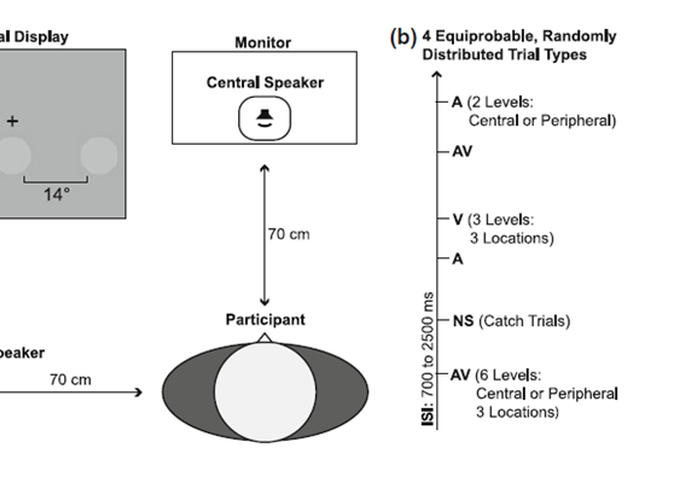Auditory facilitation of visual-target detection persists regardless of retinal eccentricity and despite wide audiovisual misalignments
Abstract
It is well established that sounds can enhance visual-target detection, but the mechanisms that govern these cross-sensory effects, as well as the neural pathways involved, are largely unknown. Here, we tested behavioral predictions stemming from the neurophysiologic and neuroanatomic literature. Participants detected nearthreshold visual targets presented either at central fixation or peripheral to central fixation that were sometimes paired with sounds that originated from widely misaligned locations (up to 104 degrees from the visual target). Our results demonstrate that co-occurring sounds improve the likelihood of visual-target detection (1) regardless of retinal eccentricity and (2) despite wide audiovisual misalignments. With regard to the first point, these findings suggest that auditory facilitation of visual-target detection is unlikely to operate through previously described corticocortical pathways from auditory cortex that predominantly terminate in regions of visual cortex that process peripheral visual space. With regard to the second point, auditory facilitation of visual-target detection seems to operate through a spatially non-specific modulation of visualprocessing.
